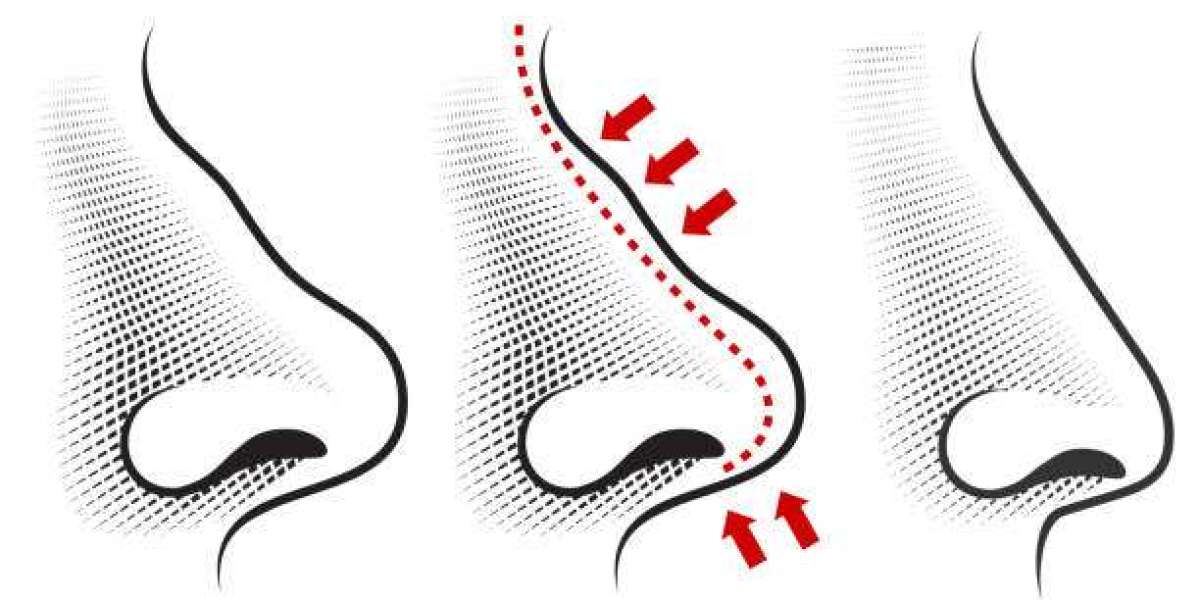If you're experiencing difficulty breathing through your nose, chronic congestion, or a deviated septum, you may be a candidate for functional rhinoplasty. While rhinoplasty is often associated with cosmetic improvements, the functional form of this surgery focuses on restoring or improving nasal airflow—without necessarily altering the appearance of the nose.
In Islamabad, an increasing number of patients are choosing functional rhinoplasty to correct structural issues, improve breathing, and even relieve sleep-related problems like snoring or mild sleep apnea. This article explores what functional rhinoplasty is, how it’s performed in Islamabad, and what you can expect before, during, and after surgery.
What Is Functional Rhinoplasty?
Functional rhinoplasty is a reconstructive surgical procedure designed to address structural abnormalities within the nose that impair breathing. It is different from cosmetic rhinoplasty, which is primarily done to enhance the external shape or appearance of the nose.
Common conditions treated with functional rhinoplasty include:
Deviated septum (nasal septum shifted to one side)
Nasal valve collapse
Turbinate hypertrophy
Congenital or trauma-related deformities
Chronic nasal obstruction
This procedure is often performed by ENT (ear, nose, and throat) specialists or board-certified plastic surgeons in Islamabad with experience in both cosmetic and functional nasal surgery.
Symptoms That May Indicate the Need for Functional Rhinoplasty
You may benefit from functional rhinoplasty if you are experiencing:
Persistent nasal blockage or congestion
Difficulty breathing through one or both nostrils
Snoring or disrupted sleep due to nasal obstruction
Frequent sinus infections or sinus pressure
Mouth breathing, especially at night
Reduced sense of smell
These symptoms can have a significant impact on your quality of life, including your sleep, energy levels, and even your athletic performance. If left untreated, structural nasal issues can worsen over time.
Functional Rhinoplasty vs Septoplasty – What’s the Difference?
In Islamabad, many patients confuse septoplasty and functional rhinoplasty, as both procedures are used to correct breathing problems.
Septoplasty focuses only on correcting a deviated septum (the cartilage and bone that divides the nasal cavity).
Functional Rhinoplasty can address the septum as well as other components like nasal valves, turbinates, and external nasal support structures.
In many cases, a combined procedure is recommended, particularly when cosmetic concerns are present alongside breathing issues.
Why Choose Functional Rhinoplasty in Islamabad?
Islamabad is home to some of Pakistan’s most advanced medical facilities and ENT specialists. Choosing to undergo functional rhinoplasty in Islamabad provides access to:
Skilled Surgeons
Many ENT and plastic surgeons in Islamabad are board-certified, PMC-registered, and have international training in advanced nasal surgery techniques.
Modern Equipment
Hospitals and private clinics in Islamabad use high-resolution imaging, nasal endoscopy, and 3D planning tools to customize each procedure.
Competitive Pricing
Functional rhinoplasty in Islamabad is generally more affordable than in Western countries, while maintaining international standards of care.
Integrated Care
Patients benefit from multidisciplinary teams that include ENT surgeons, anesthesiologists, and respiratory specialists, ensuring safe and thorough treatment.
The Procedure – What to Expect
1. Initial Consultation
Your surgeon will review your symptoms, medical history, and perform a detailed nasal exam. Nasal endoscopy or imaging (CT scan) may be required to assess internal structures.
2. Surgical Planning
You’ll receive a customized treatment plan, which may include correction of the septum, nasal valves, turbinates, or support structures. If cosmetic changes are also desired, these can often be incorporated into the same procedure.
3. The Surgery
Functional rhinoplasty is typically done under general anesthesia
The surgery lasts between 1 to 3 hours, depending on complexity
Incisions are usually made inside the nose (closed approach), though open rhinoplasty may be needed for more complex structural corrections
Recovery After Functional Rhinoplasty
After the surgery, patients are closely monitored and usually discharged the same day or after one overnight stay. Here’s what the recovery process looks like:
Week 1:
Mild swelling and congestion are common
A nasal splint may be in place for support
Breathing may temporarily feel worse due to internal swelling
Week 2–4:
Nasal congestion improves as swelling reduces
Most patients return to work or school within 7–10 days
Avoid strenuous activity and nose-blowing during this period
Months 2–6:
Final breathing improvements become more noticeable
Internal healing continues
Your surgeon will schedule regular follow-ups to monitor your progress and ensure optimal healing. Most patients report a significant improvement in nasal airflow within the first month.
Risks and Complications
As with any surgical procedure, functional rhinoplasty comes with some potential risks. These include:
Bleeding
Infection
Scarring (usually internal)
Persistent nasal obstruction (rare)
Need for revision surgery
Choosing an experienced rhinoplasty surgeon in Islamabad helps reduce the risk of complications. Always follow your surgeon’s pre- and post-operative instructions closely.
Cost of Functional Rhinoplasty in Islamabad
The price of functional rhinoplasty in Islamabad generally ranges between PKR 150,000 to PKR 350,000, depending on:
The complexity of the condition
Whether cosmetic elements are included
Surgeon’s experience and hospital fees
Some health insurance policies may cover part of the procedure if it’s deemed medically necessary, such as in cases of a deviated septum or chronic nasal obstruction.
Finding the Right Surgeon in Islamabad
To ensure a safe and effective experience, consider the following when selecting a surgeon:
Are they registered with the Pakistan Medical Commission (PMC)?
Do they specialize in ENT surgery or facial plastic surgery?
Can they show before-and-after results of functional cases?
Do they have strong patient reviews and testimonials?
You can also request a second opinion before committing to the surgery.



